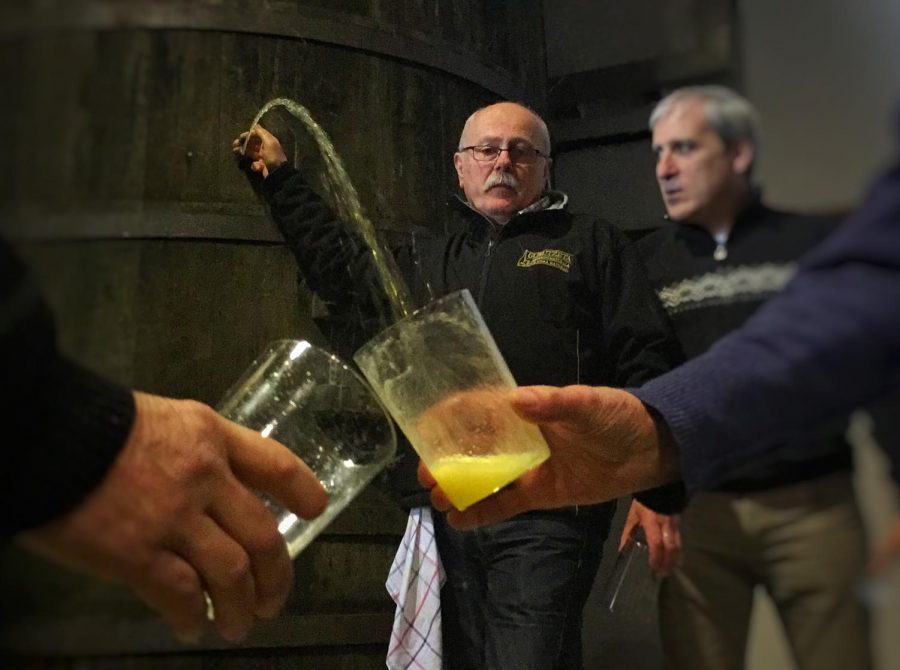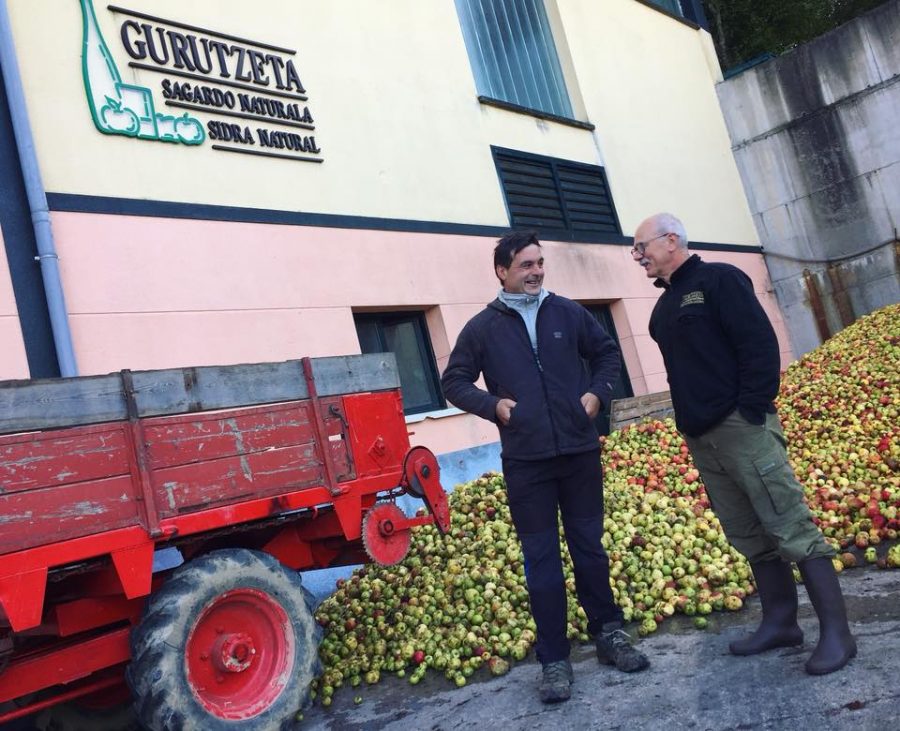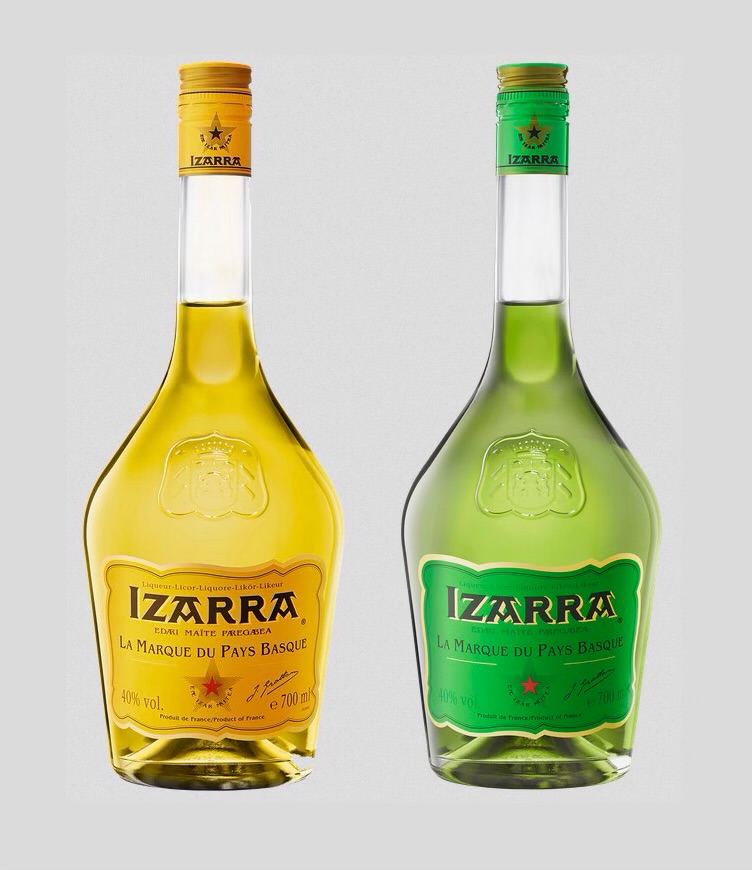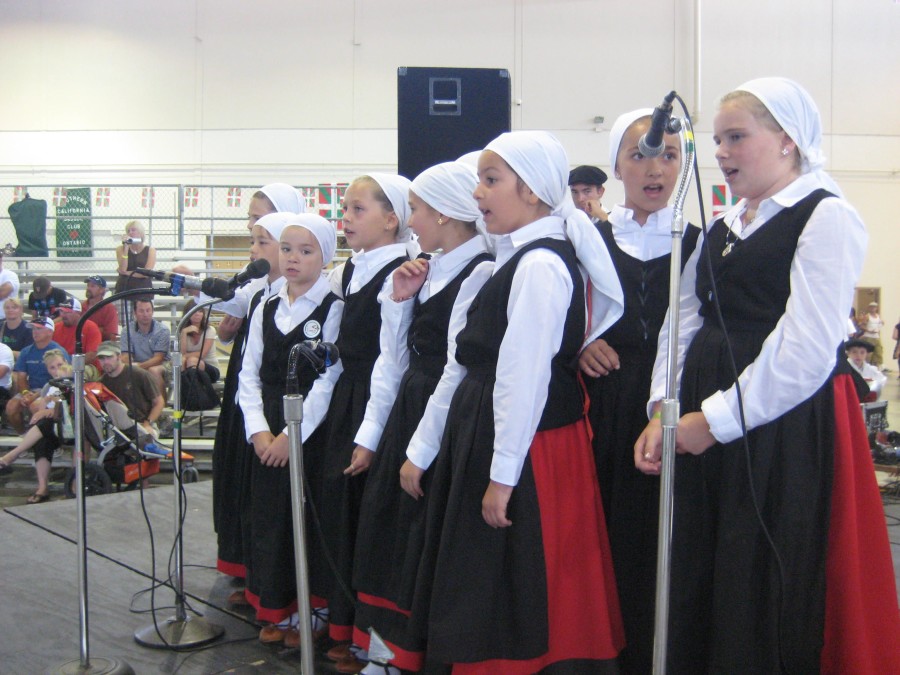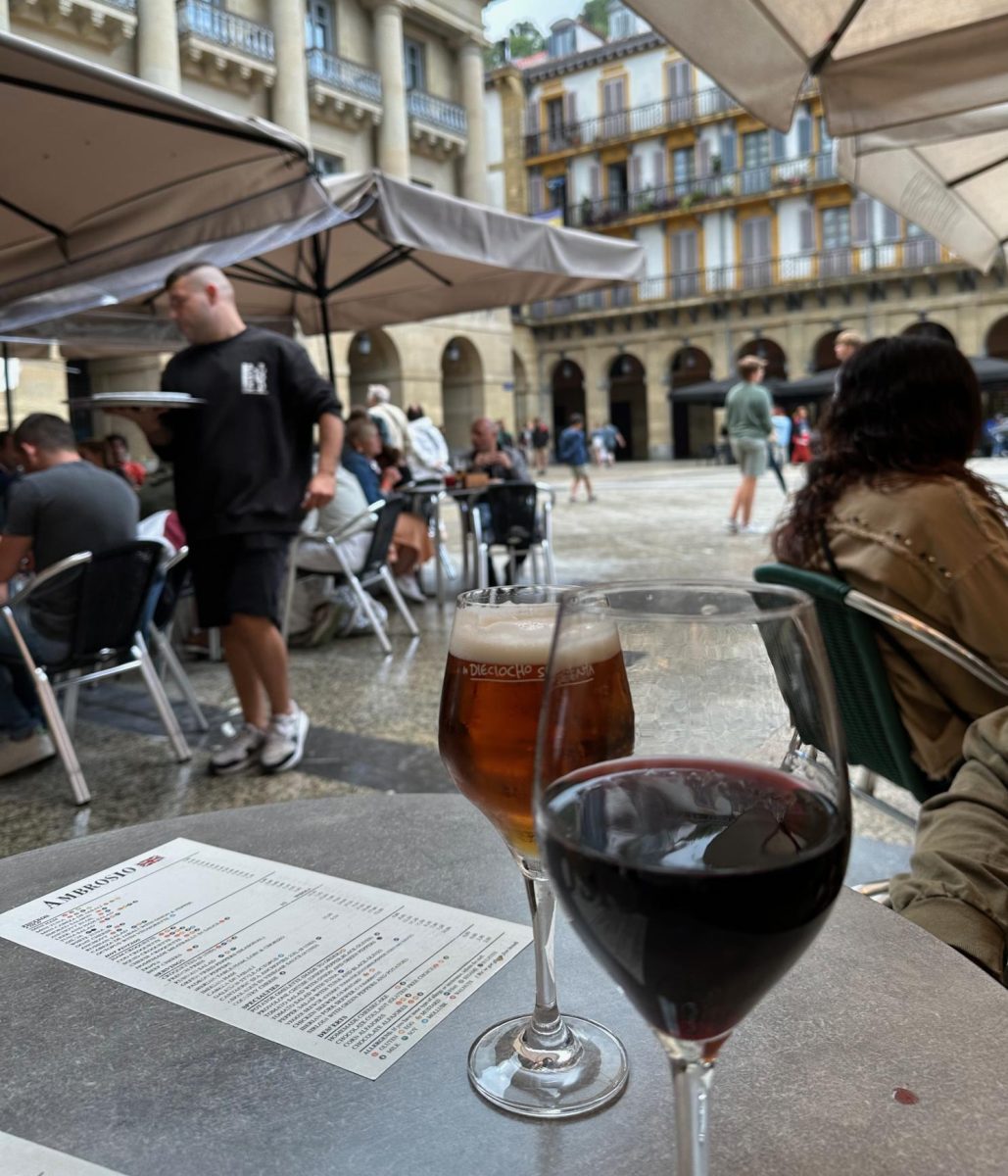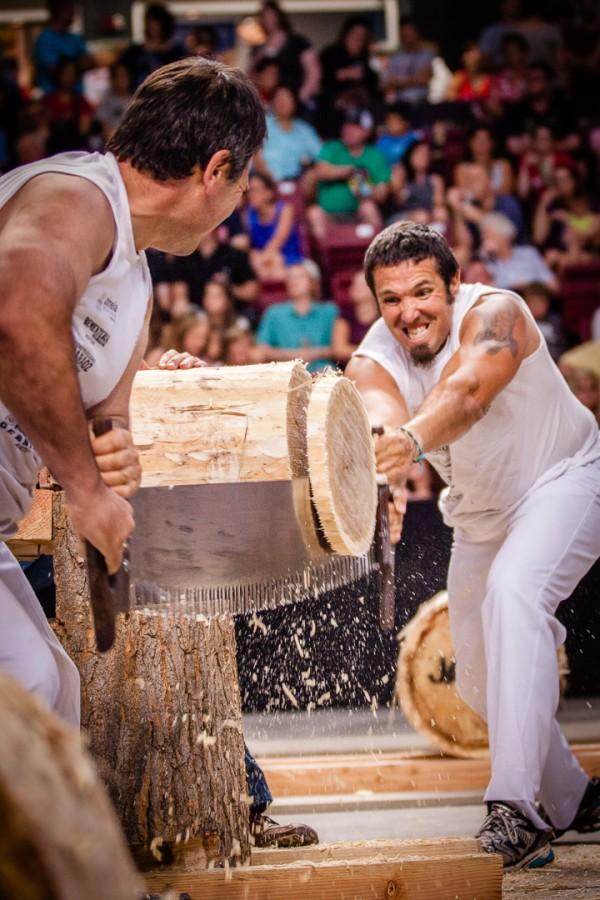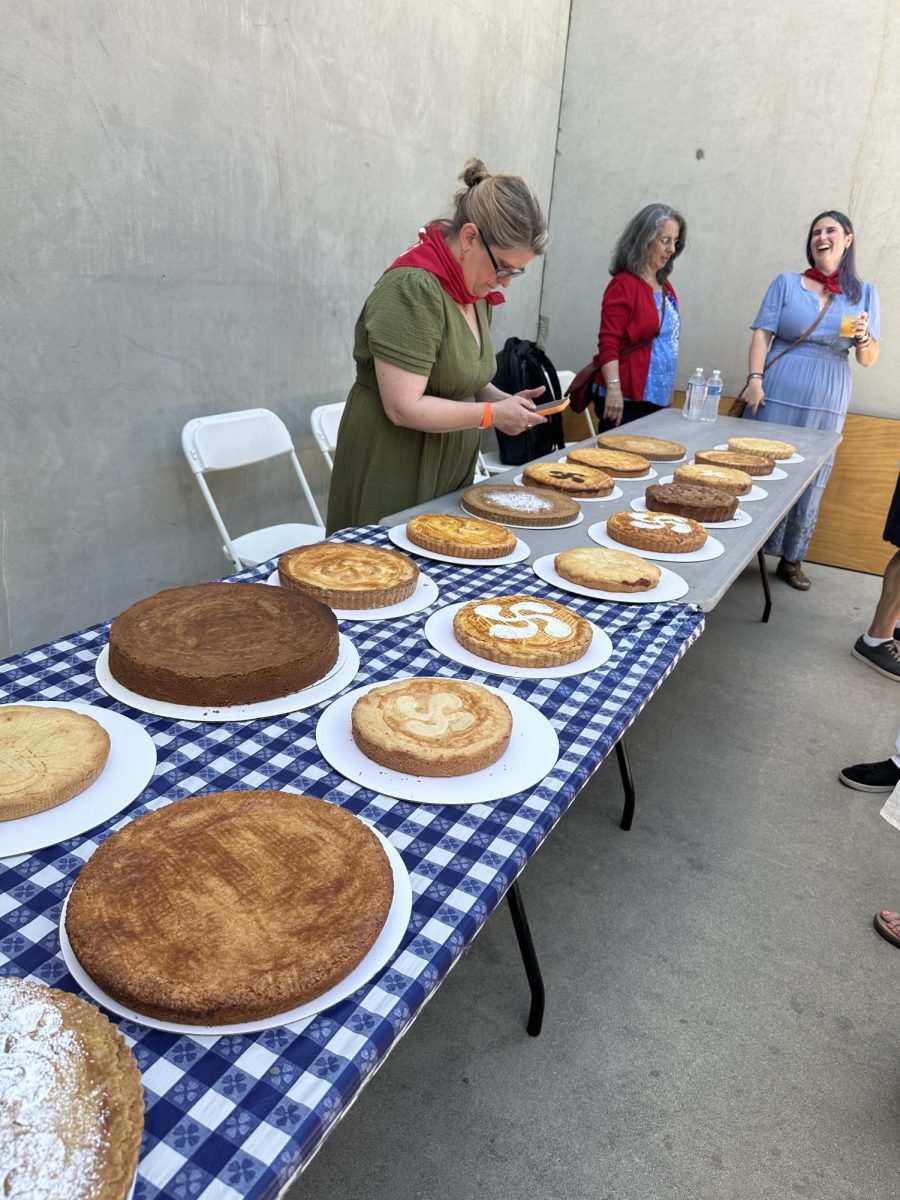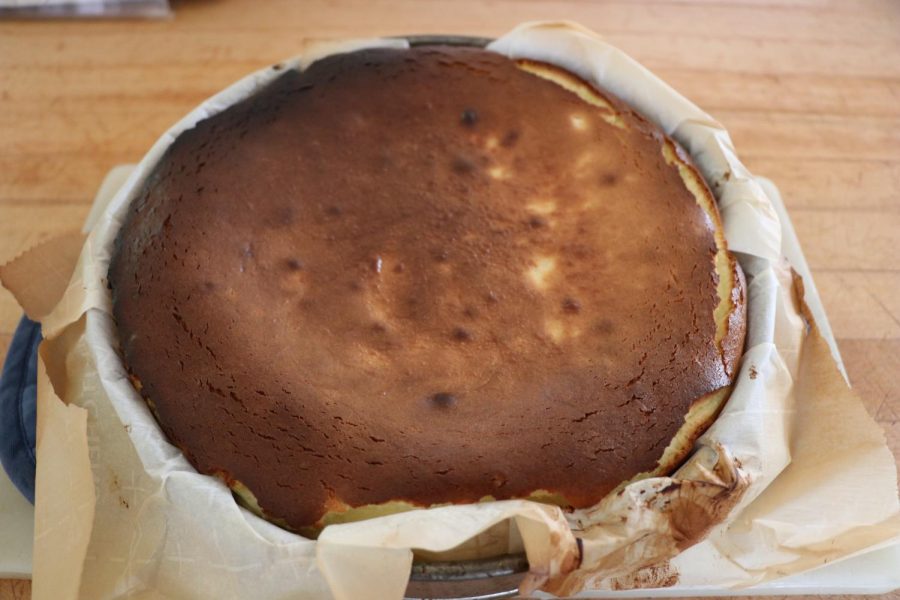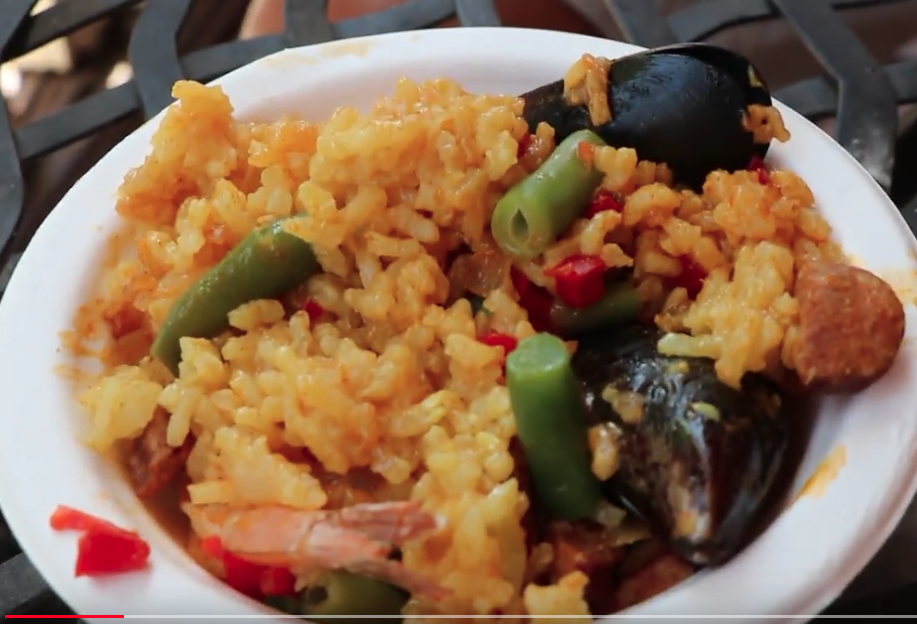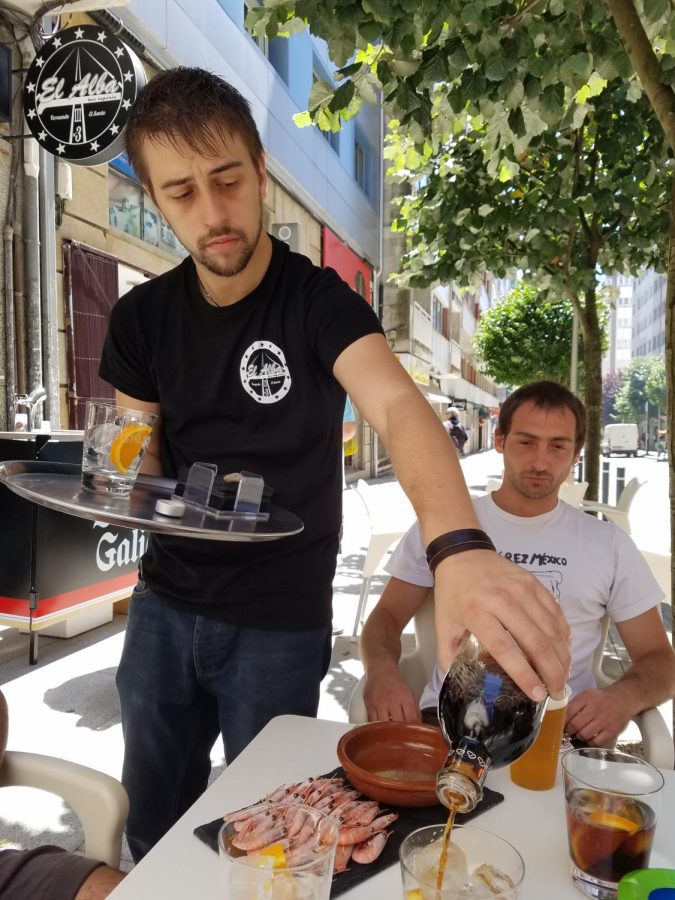It’s txotx season in the Basque Country, when the cider houses open their barrels to the public and start selling their cider. Typically it starts on January 20, the day of the Tamborrada celebration in Donostia. But this year, because of COVID restrictions, many Basque cider houses delayed their openings. Gurutzeta, one of the oldest cider houses in the Basque Country, is planning to open Feb. 16.
Basque cider or sagardoa (literally “apple wine”) is a very dry, hard apple cider. The zone in Gipuzkoa where Gurutzeta is located is the heart of the cider tradition in the Basque Country. The town of Astigarraga has at least 30 cider houses, while nearby Hernani has about 20. This is the largest concentration of cider houses per capita in the world.
Read More Stories About Basque Drinks
“We started making cider as part of the work of the baserri (Basque farmhouse),” said Leire Goñi, daughter of Gurutzeta’s current owner, Jose Angel Goñi. Baserri families typically raised some cows and pigs and grew crops. Gurutzeta started making its cider around 1900.
“It was something to drink at home and also something to sell,” Goñi explained in a recent Zoom interview with Euskal Kazeta. In the early days of making cider, they would transport it in a cask by wagon to sell to nearby workers as they ate their lunches.
Goñi’s great great-grandparents, Joxepa and Joxe Mari Urreaga, moved in to the Gurutzeta baserri after marrying and started making cider there. Urreaga was following a practice he learned at the nearby house where he grew up. Goñi relates that their daughter, her great grandmother Mikaela, and her husband Jose Goñi continued the cider-making. Mikaela’s oldest brother, by tradition, was supposed to inherit the baserri, but he wasn’t interested, so instead she and her husband took over. It was the period of the Spanish Civil War. When their son, Goñi’s grandfather, took over the business in the 1960s, he started selling off the animals and giving up agriculture and focused full-time on cider-making.
More Stories from EUSKAL KAZETA
Top Basque Cookbooks in English
Roasted Chestnuts Helped Families Survive
Best Places and Dishes to Eat in the Basque Country
Even though the area is an apple-growing region, Gurutzeta did not grow its own apples, but instead bought them from neighboring farms.
The apples are collected in September and October and the cider is produced and left to ferment. During txotx season, which starts in January and usually runs to the end of April, people visit the cider houses to drink cider and eat the traditional cider house meal. Typically most cider houses serve the same menu – cod or bakailio omelet, a second cod dish, steak (txuleta), with Idiazabal cheese (gazta), apple or quince jelly and walnuts (intxaurrak) for dessert.
“Gutxi baina maiz”- A little, but often
When visitors arrive, the barrels are opened to allow a thin stream of cider to be released. This is the moment when you’ll hear the cry “txotx” as people line up to collect the cider in their glasses. Catching the stream from a distance allows the cider’s natural effervescence to bubble up and create an aromatic foam, known as txinparta. Unlike alcoholic cider made the U.S., Basque cider has no carbonation added. It is recommended to fill the glass only about three fingers high and drink it right away — and then get another.
The sagardotegi tradition has made its way in recent years to the U.S. Basque community. The Oinkari dancers of Boise, Idaho have sponsored a couple of sold-out sagardotegi dinners to raise funds. Last November, the Basque Cultural Center in South San Francisco hosted a similar event that was very popular, although table seating was limited because of pandemic restrictions.
The txotx tradition in the Basque Country, explained Goñi, started years ago with the txokos — cooking collectives where groups of friends meet to cook, eat and drink. They would visit the sagardotegis to taste the cider and decide which one they would buy for their txoko. Initially, they brought their own food to accompany the cider tasting, which evolved into the current traditional ciderhouse meal.
Cider-making has obviously changed with the years. The press used to be made of wood. Today it’s made of stainless steel. They have also introduced stainless steel barrels, “although we still keep barrels made of wood, most of chestnut wood,” said Goñi.
“My father and his sisters remember how they used to wash champagne bottles in the bathtub before filling them with the cider,” said Goñi. Later, in 1980, their sagardotegi was one of the first to begin selling cider in bottles with their own label. Today, the cider house is also one of the few that distributes to the United States.
Goñi, an only child, recently joined the family business. Her father attributes their success to the fact that many generations of the same family have been making the cider. They have undergone rigorous testing to receive the Gorenak seal, which ensures that they have met high industry standards. They produce another version, “Euskal Sagardoa,” which requires that all the apples come from the Basque Country. They also have a Cidre Ecologica label, which means that pesticides have never been used on the apples. About four to five years ago, they began exporting their cider to the U.S.
Sagardoa Protected Early Basque Sailors from Scurvy
Cider-making in the Basque Country became popular after the civil war, when the txokos created a bigger demand. But it has been produced in individual baserris for centuries and in fact, it may have contributed to the Basques’ early success as sailors. The fresh water they carried on ships would rot quickly, so the Basques developed a tradition of taking sagardoa on their ships. Not only did the fermented drink last, but it provided Vitamin C, highly necessary on long seafaring trips for the prevention of scurvy, which killed many sailors.
For NABO’s report on cider, read this.
Another history of Basque cider from Ciderzale
Gurutzeta is distributed in many locations in the U.S. by B. United International.
California
Redfield Cider – Oakland
Berkeley Bowl – Berkeley
Flask Fine Wines – LA
Corner Shop – LA
Button Mash – LA
Alma’s Cider Bar – LA
Bottlecraft North Park – San Diego
Colorado
Ultreia in Denver
Idaho
Bar Gernika (Basque restaurant in Boise)
The Basque Market (Boise)
Boise Consumer Co-op (both Boise & Meridian locations)
Brewers Haven (Boise)
Idaho Pour Authority (Sandpoint- N. ID)
Coeur d’Alene Cider Company (N. ID)
New York
Ernesto’s – Basque Restaurant in Manhattan
Owl Farm Brooklyn
Torst Brooklyn
Proletariat Manhattan
Beer Street Brooklyn
Beer Witch Brooklyn
209 Station Brooklyn
Sundown Bar Queens
Beer Run Manhattan
Mekelburg’s – Brooklyn
Park Slope Food Co-Op – Brooklyn
Mekelburg’s – Brooklyn
Park Slope Food Co-Op – Brooklyn
Maine
Anoche – Portland, Maine . A Basque-inspired cider house and bistro. Gurutzeta is their house draft
Nevada
Total Wines and More locations statewide
Pinion Bottle Midtown – Reno
Cosmopolitan Resort and Casino – Las Vegas
SerVehZah – Las Vegas
Oregon: All in Portland
Schilling Cider House
John’s Marketplace- Multnomah
John’s Marketplace- Powell Blvd.
1856
The Place
Washington: All in Seattle
Schilling Cider House
Capitol Cider
Bottleworks
Chuck’s Chop Shop

